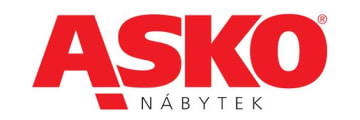Komunikační kanály
Operátoři
Počet konverzací
Historie konverzací
Chatbot konverzace
Oslovení návštěvníků
Týmové statistiky & skupiny
Sběr kontaktů chatbotem
AI chatboti využívající ChatGPT
Rest API a možnost exportu dat
Zákaznická podpora
Free
Ideální pokud si chcete live chat vyzkoušet
0 CZK/navždy
Komunikační kanály
Live chat + email + FB Messenger
Operátoři
1
Počet konverzací
50 konverzací / měsíc
Historie konverzací
14 dní
Chatbot konverzace
Oslovení návštěvníků
1 automatická zpráva
Týmové statistiky & skupiny
Sběr kontaktů chatbotem
AI chatboti využívající ChatGPT
Rest API a možnost exportu dat
Zákaznická podpora
Standard
Skvělé pro začínající firmy
od
480 CZK/měsíc
Komunikační kanály
Live chat + email + FB Messenger
Operátoři
3
Počet konverzací
neomezeně
Historie konverzací
1 rok
Chatbot konverzace
50 / měsíc
(Možnost navýšení na 300 / měsíc)Oslovení návštěvníků
1 automatická zpráva
Týmové statistiky & skupiny
Základní statistiky
Sběr kontaktů chatbotem
AI chatboti využívající ChatGPT
Rest API a možnost exportu dat
Zákaznická podpora
přes e-mail
Nejoblíbenější
Pro
Pro menší týmy zákaznické péče
od
1200 CZK/měsíc
Komunikační kanály
Live chat + email + FB Messenger
Operátoři
3
(Možnost navýšení na 10)Počet konverzací
neomezeně
Historie konverzací
3 roky
Chatbot konverzace
100 / měsíc
(Možnost navýšení na 1000 / měsíc)Oslovení návštěvníků
5 automatických zpráv
Týmové statistiky & skupiny
Sběr kontaktů chatbotem
AI chatboti využívající ChatGPT
ADD-ON
(Naplánujte si schůzku)Rest API a možnost exportu dat
ADD-ON
(Naplánujte si schůzku)Zákaznická podpora
Prioritní zákaznická podpora
Ultimate
Řešení na míru
- Individuální limity
- Všechny pokročilé funkce
- AI chatboti využívající ChatGPT
- API a možnost exportu dat
- Přidělený specialista zákaznické péče
- Osobní asistence při nastavování AI chatbotů
- Individuální školení a optimalizace účtu na pravidelných 1:1 setkáních
- Individuální smlouva
- Platba bankovním převodem
- Mobilní SDK
- Whatsapp integrace
GDPR
Soulad s GDPR nařízením
E-commerce
Integrace pro e-commerce platformy
Mobilní aplikace
pro iPhone a Android
Přehled funkcí
Free
Standard
Pro
Ultimate
Centrum nápovědy
Zákaznická podpora
přes e-mail
Prioritní zákaznická podpora
Přidělený specialista zákaznické péče
Bezpečnost dat - v souladu s GDPR
Prémium funkce
Počet webových stránek
1
2
5
Vlastní limit
Operátoři
1
3
3 (Možnost navýšení na 10)
Vlastní limit
Historie konverzací
14 dní
1 rok
3 roky
3 roky
Počet konverzací
50 konverzací / měsíc
Neomezeně
Neomezeně
Neomezeně
Chatbot konverzace
50 / měsíčně (Možnost navýšení na 300)
100 / měsíčně (Možnost navýšení na 1000)
Vlastní limit
Oslovte návštěvníky pomocí seznamu návštěvníků
Zapojte automatické zprávy
1 automatická zpráva
1 automatická zpráva
5 automatických zpráv
Vlastní limit
Posílání e-mailu
Facebook Messenger integrace
Segmentace pomocí štítků
Osobní zkratky
1
Neomezeně
Neomezeně
Neomezeně
Hodnocení spokojenosti zákazníků
Detailní info o návštěvnících
Zablokování návštěvníka
Přiřazení konverzace operátorovi
Google Analytics napojení
Základní statistiky
Chatbotí šablony
Vícejazyčný chatbot
Sběr kontaktů chatbotem
Segmentace a automatické štítkování
Omezený přístup pro operátory
Detailní statistiky
Skupiny operátorů
Týmové zkratky
Filtrování návštěvníků
Otevírací doba
API
Rest API a možnost exportu dat
ADD-ON
Integrace se službami třetích stran
ADD-ON
AI chatboti využívající ChatGPT
ADD-ON
AI chat asistent
Beta
15 / měsíc
100 / měsíc
500 / měsíc
Vlastní limit
Mobilní SDK
Whatsapp integrace
Základní funkce
Live chat
Webový dashboard
Adresář kontaktů
iPhone/iPad aplikace
Android aplikace
Windows aplikace
Integrace e-commerce platforem
Sdílení souborů
Základní info o návštěvnících
Zvukové a obrazové upozornění
Přizpůsobení chat boxu
Vlastní barvy chat boxu
Optimalizace pro mobilní zařízení
Fotka a popisek operátora
Otevření chat boxu přes odkaz
Chat box pro mobilní aplikaci
Kontaktní formulář
Vždy když je chat offline
Nastavitelný
Nastavitelný
Nastavitelný
Pozice chat boxu na stránce
Nastavitelný
Nastavitelný
Nastavitelný
Multi-jazyčnost a multi-design
Pokročilé nastavení chat boxu přes API
Služby
Zákaznická podpora
Zákaznická podpora přes e-mail
Prioritní zákaznická podpora
Přidělený specialista zákaznické péče
Optimalizace účtu
Asistence při vytváření chatbotů a nastavování automatizace
Pomoc s implementací a nastavením
Pravidelná proaktivní optimalizace účtu
Individuální školení vašeho týmu našimi specialisty
Prezentace nových funkcí v rámci 1:1 schůzek
Důvěřuje nám přes 100 000 zákazníků po celém světě




























Začněte hned teď